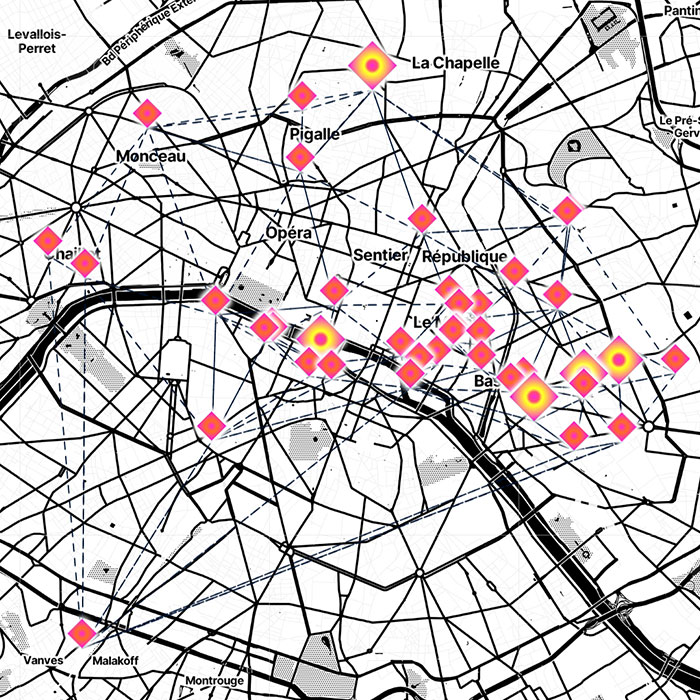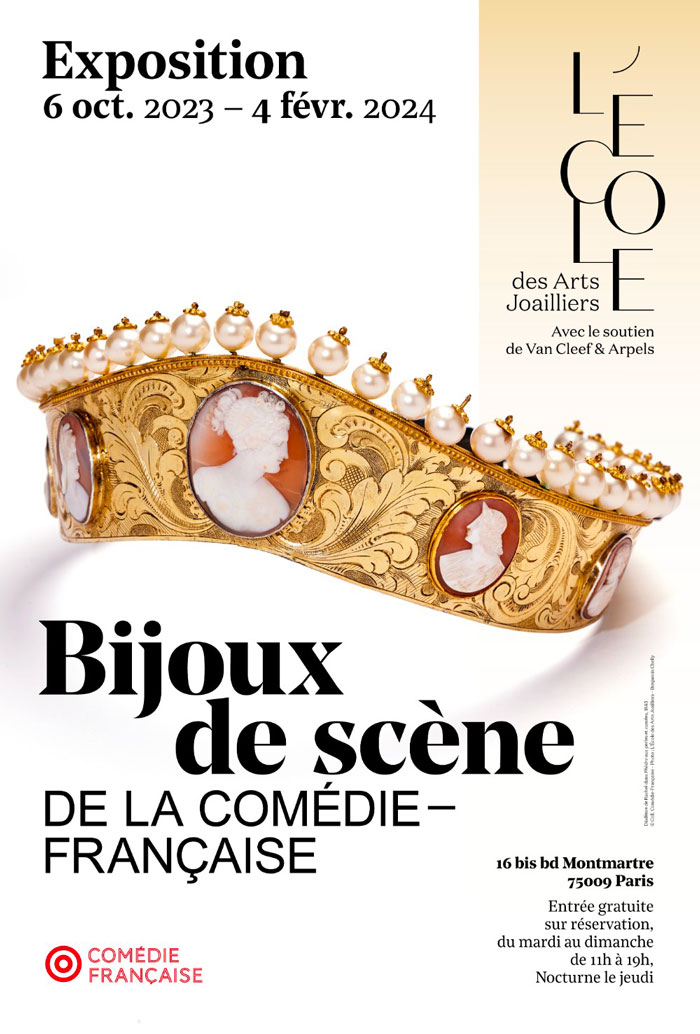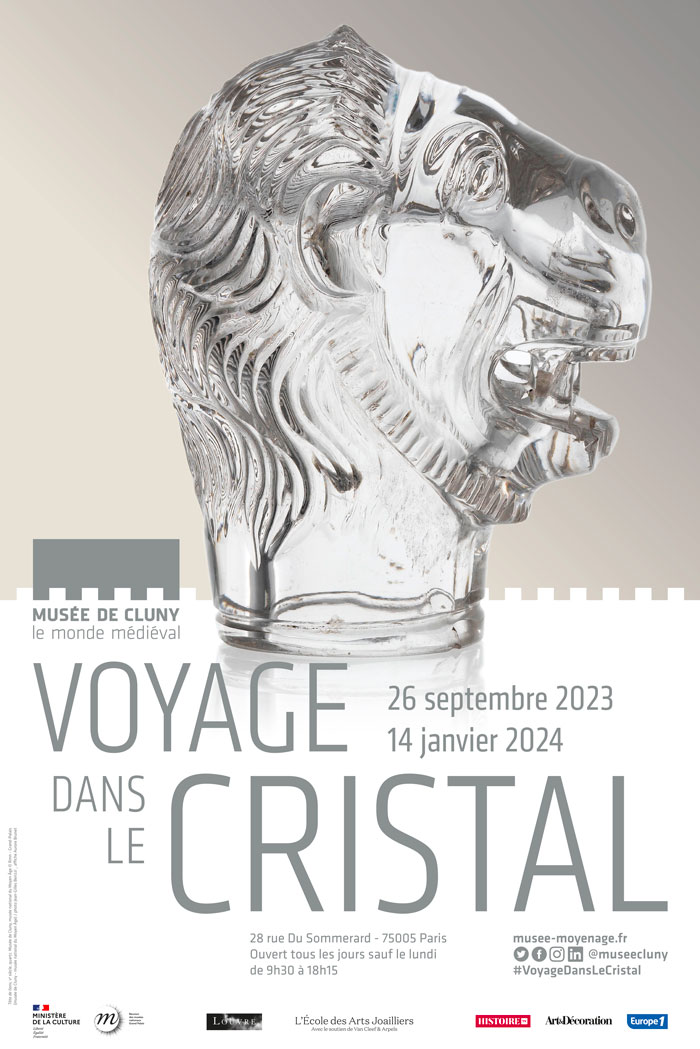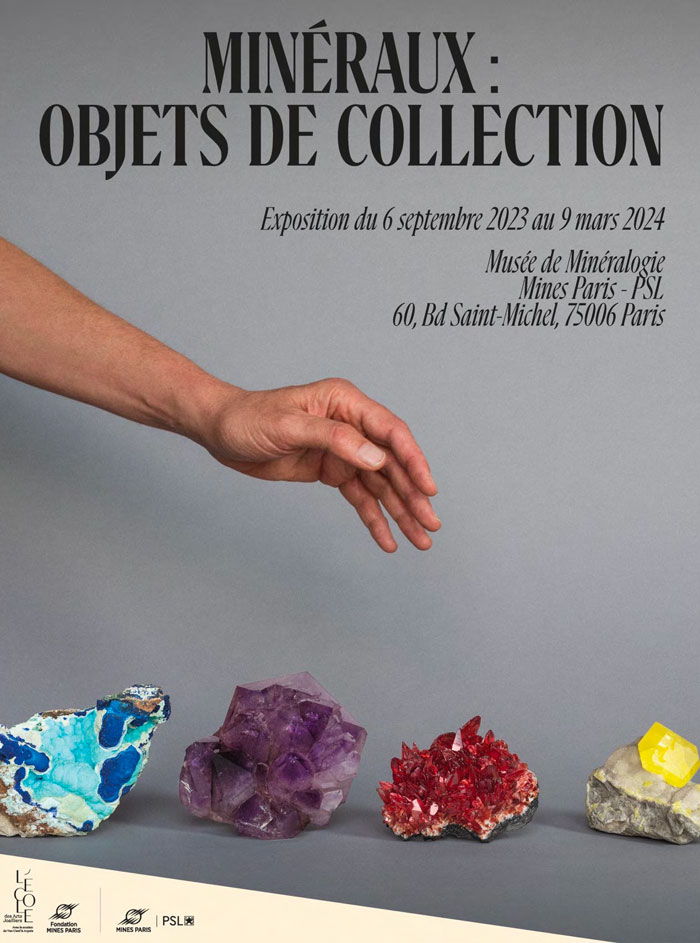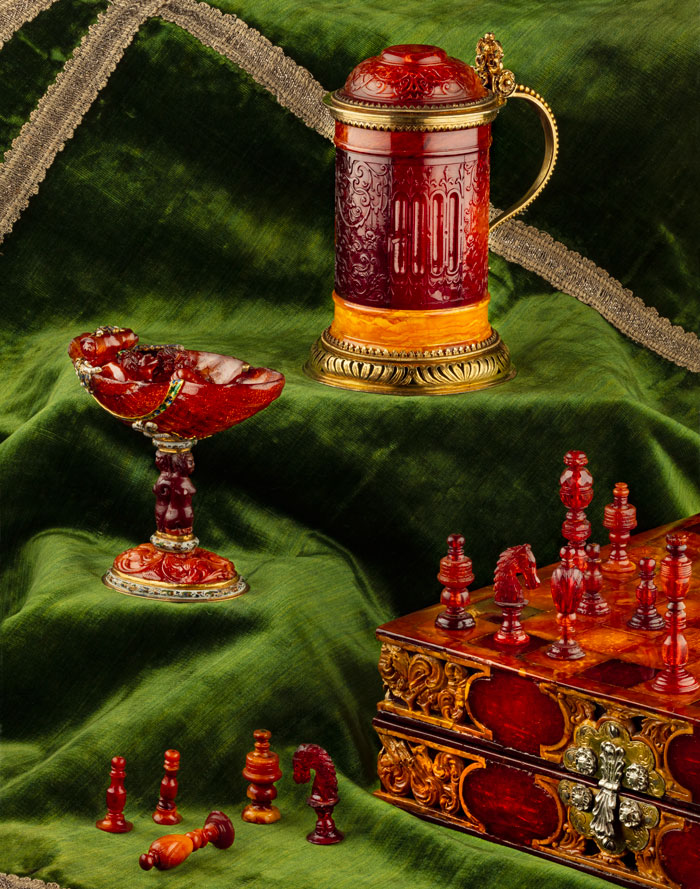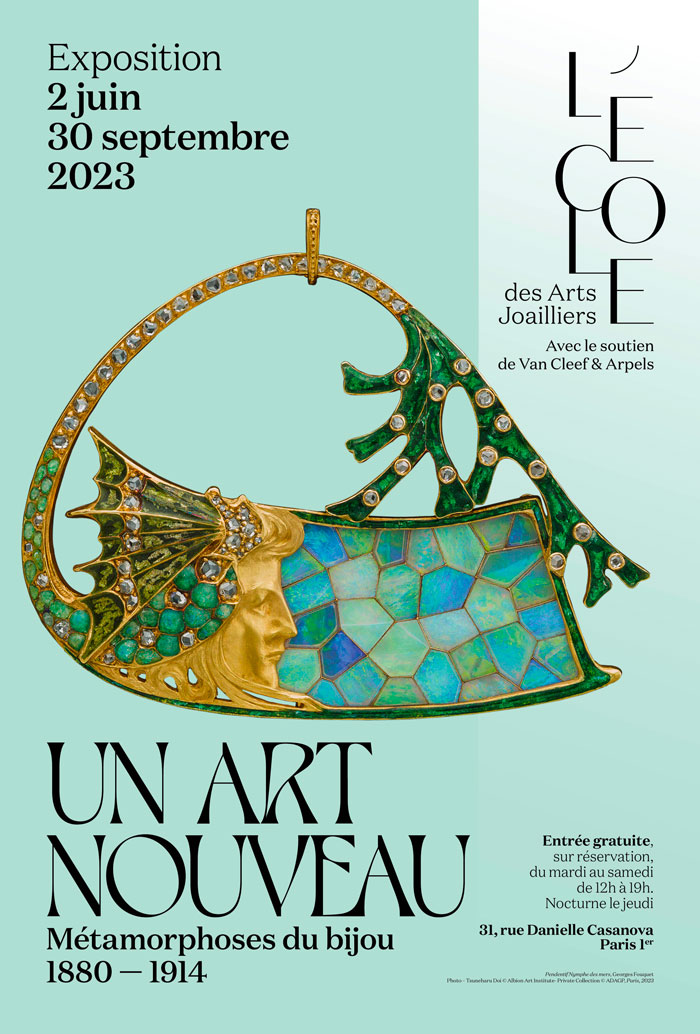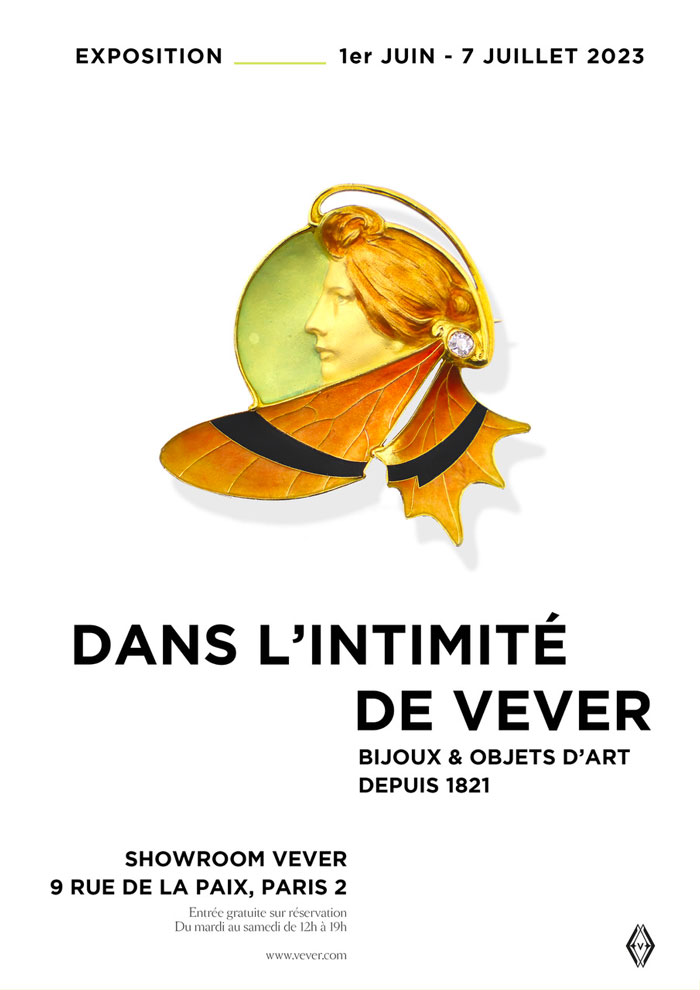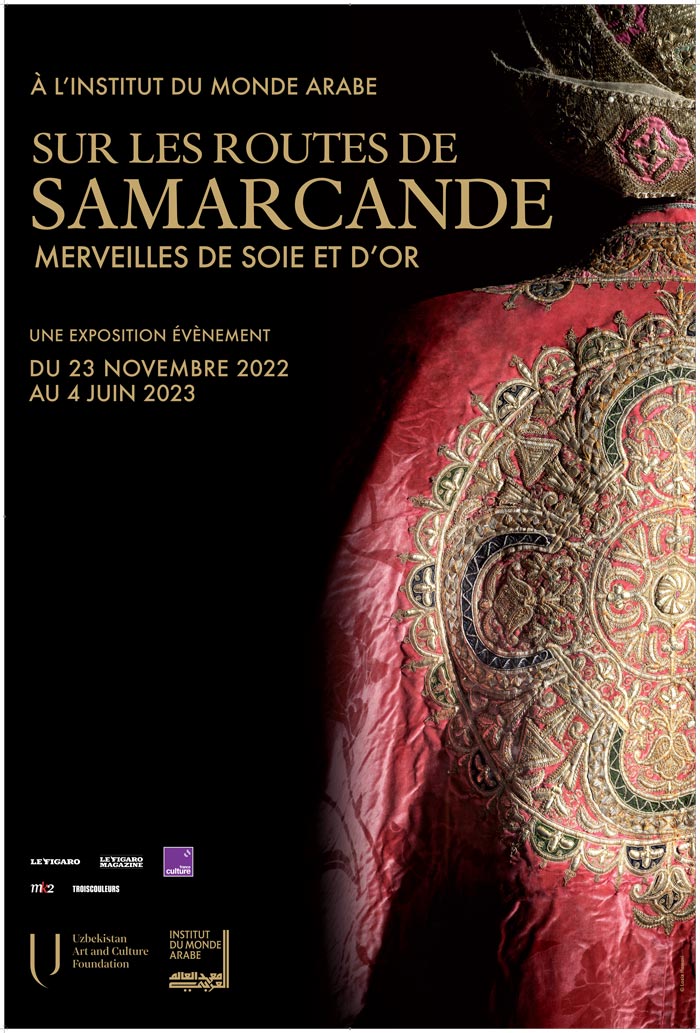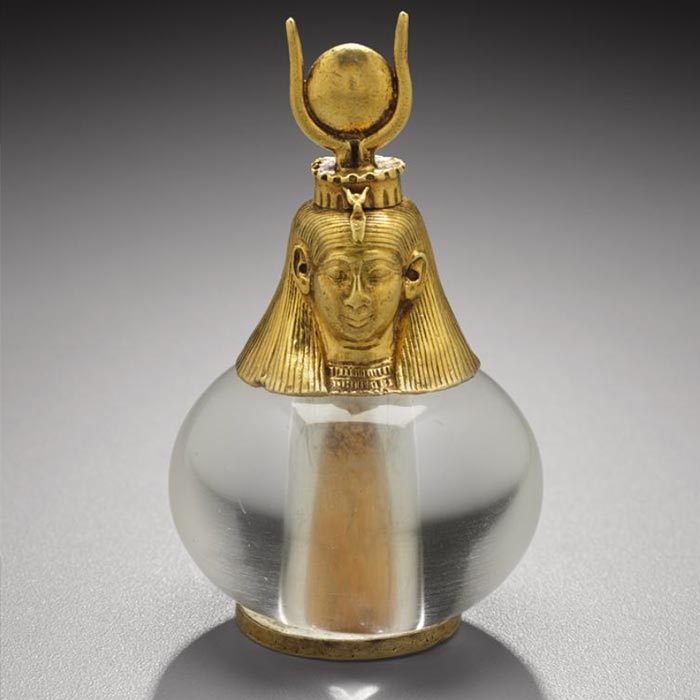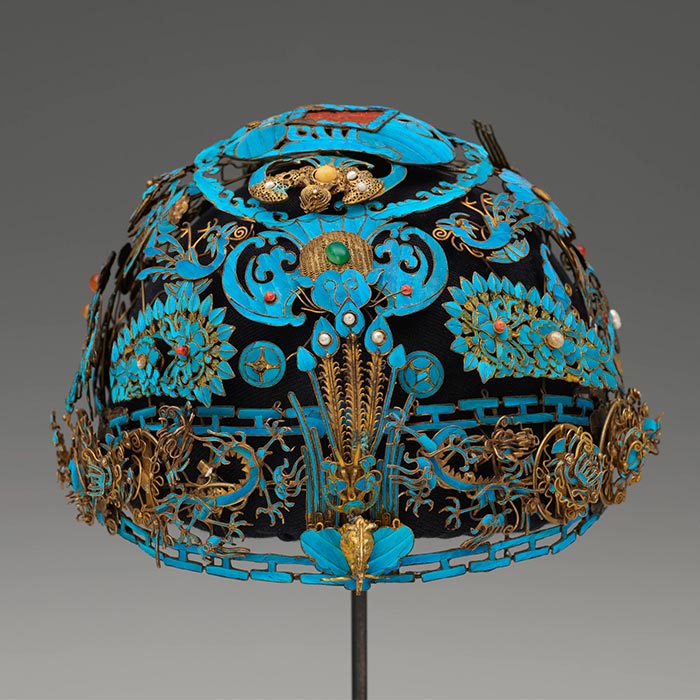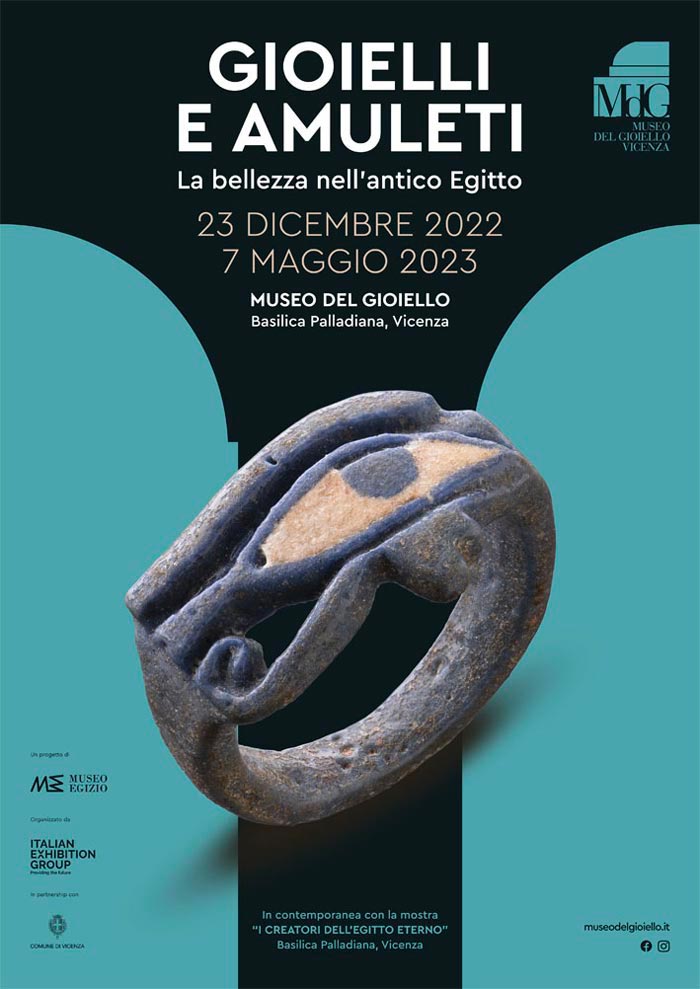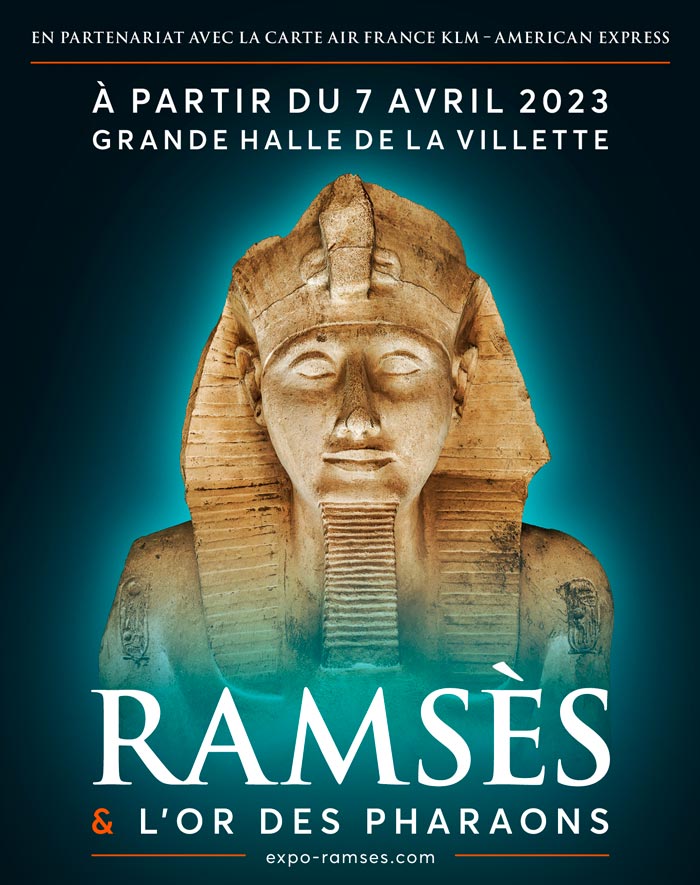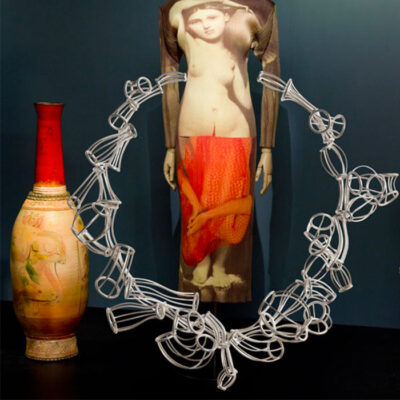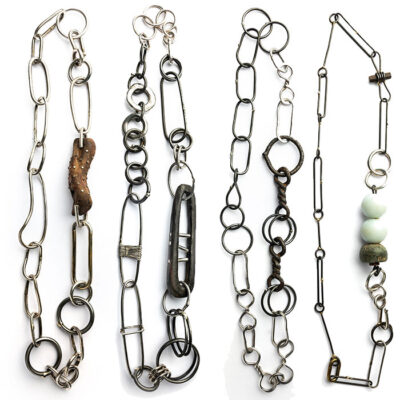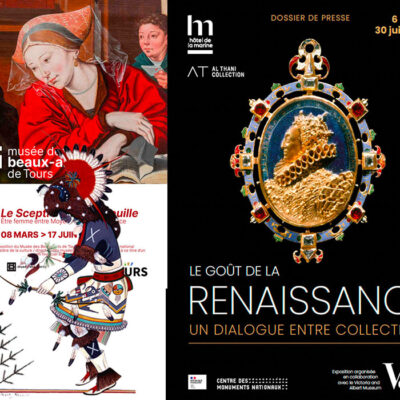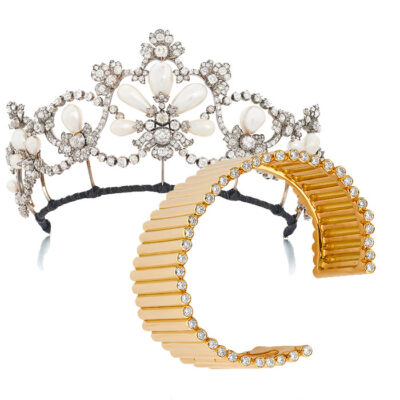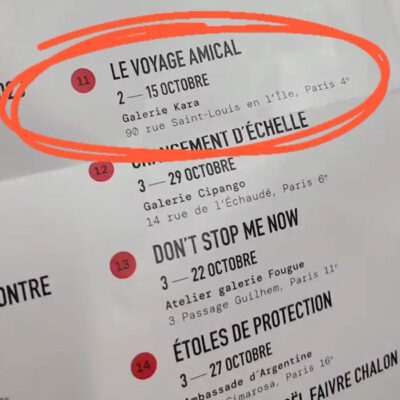My agenda
26 November 2022
Share
Must-see jewelry events in 2023
“Parcours Bijoux 2023”
“Stage Jewelry from the Comédie Française”
This is the first exhibition dedicated to the Comédie Française jewelry collection. Through 120 objects, L’École des Arts Joailliers (which also financed its restoration and a historical study published by Gallimard) illustratest the fundamental role of these jewels in various plots, as well as the techniques and materials used. These materials are often non-precious, as evidenced by a crown (ubiquitous in the theater) of gilded metal that adorned the great Talma in Britannicus, a dagger adorned with rhinestones and colored stones worn by Melle Rachel, or a diadem with “trembling” stars. Costumes (loaned by CNCS de Moulins), a stone-embroidered dress, and a tunic adorned with a voluminous glass cabochon breastplate mounted on metal foil are also presented. Videos, paintings, gouaches, manuscripts, supplier invoices amongst other things, are also displayed in a setting that evokes the intimate atmosphere of the theater. This exhibition takes place in the new location of L’École, the 18th-century Mercy-Argenteau townhouse located in the theater district. Before you go to the exhibition, please revisit the article I already dedicated to this collection.
Dates down available – L’École The School of Jewelry Arts, Paris
“Journey into Crystal”
Cluny’s museum (of medieval history) brings together 200 marvelous pieces of rock crystal. Following a chrono-thematic thread, you first discover the geological specifics of this transparent material before marveling at a range of objects illustrating its main uses. Thanks to its transparency, symbolizing purity, rock crystal has been widely used in tableware, liturgical art, divinatory arts, and scientific objects. Among these objects primarily from the Middle Ages, there are a few pieces of jewelry, including a sublime ring with a female bust designed in the 2nd century.
From 26 September 26, 2023 to January 14, 2024 – Musée de Cluny, Paris
“Minerals: Collector’s Items”
On the occasion of the 230th anniversary of the collection at the Museum of Mineralogy of the Mines, this exhibition looks back at how it was formed. Initiated by professors and engineering students from the School of Mines, its original purpose was to inventory the mineral resources of France and the world for preservation and to study their strategic importance. Over time, it has enriched itself with exceptional specimens from Prince Napoleon’s expedition to the North Seas, purchases of collections like that of Marquis de Drée, revolutionary confiscations, donations, exchanges with other museums, and so on. You can admire the jewels of the crown saved from the 1887 auction, such as eight of the 45 emeralds from Napoleon III’s Sacre crown, the topazes purchased by Nitot to create a jewel for Empress Marie-Louise, and much more besides. Before you go to the exhibition, please revisit the article I already dedicated to this collection.
From 6 September 6, 2023 to March 9, 2024 – Musée de Minéralogie de Mines Paris – PSL
“Amber – 16th-18th century Treasures of the Baltic Sea”
Organized by the renowned Kugel Gallery (owned by the fifth generation of an art merchant family), this exhibition on amber is a first. There are no jewelry items to speak of, but it is interesting to delve into this material occasionally used by jewelers. Discover its history, colors (ranging from red to white), virtues, and the techniques used through about fifty works: sculptures, boxes, cups, and games that constituted the Kunstkammern (cabinets of curiosities) of the 16th century. Fun fact, before it was discovered that amber was fossilized resin secreted millions of years ago by conifers or flowering plants, it was initially believed to be whale sperm or solidified lynx urine.
From October 18, 2023 to December 16, 2023 – Kugel Gallery, Paris
“Jewelry Secrets”
This traveling exhibition has come to Paris. Organized by the Francéclat committee (a professional committee for economic development, among other things for jewelry), it presents 250 pieces of jewelry, but its main purpose is to introduce both young and old to this fascinating subject. The exhibition is divided into three parts: creation, manufacturing (including the technique of 3D printing using gold powder), and finally, jewelry for wearing. It’s sure to inspire new interest in working in this field.
November 10-19, 2023 – Réfectoire des Cordeliers, Paris
‘Egyptomania: Fashion’s conflicted obsession’
This exhibition on a classic theme that’s topical more than ever is not exclusively devoted to jewelry. But it’s the perfect opportunity to admire some very beautiful pieces, such as the brooch formed by a Cartier scarab.
April 1st, 2023 to January 28, 2024 – Cleveland Museum of Art
‘Hair and Hairs’
From April 5 to September 17, 2023 – Musée des Arts décoratifs, Paris
‘Dans l’intimité de Vever – Bijoux et Objets d’art depuis 1821’
From July 1 to July 7, 2023 (extension until August 12th) – Vever, Paris
‘Jewelry metamorphoses’
In its heritage gallery, Van Cleef & Arpels presents an exhibition dedicated to jewelry’s astonishing capacity for transformation, featuring some thirty pieces: a sautoir that divides into four bracelets and a clip, a necklace with a zip that becomes a bracelet, and the head of a comb that becomes a clip, and many more. And there’s no better illustration of this than the minaudiere, the jeweler’s signature piece: inside, compartments designed to hold lipstick, powder and puff, lighter, comb, and so on, open, extend and unfold.
Until June 27, 2023 – The Van Cleef & Arpels boutique, Paris
‘A New Art. Metamorphoses of Jewelry, 1880 – 1914’
June 2, 2023 to June 30, 2023 – The School of Jewelry Arts, Paris
‘5000 years of pearls’
Pearls are presented unassembled, in necklaces or rosaries, and also adorn jewelry boxes. The oldest ones date back to prehistoric times. Most of them, placed with a deceased person in a tomb, were excavated in the Netherlands but also in the Middle East, the Mediterranean and Scandinavia. They make it possible to trace the trade routes and the importance of production centers such as Amsterdam from 1600 onwards. Also on display are manuscripts, a 4,000-year-old statue of a Mesopotamian prince and works by the artist Floor Kaspers, made with thousands of micropearls.
Until May 2023 – Rijksmuseum van Oudheden
‘Kingfisher headdresses from China’
More than 20 headdresses, jewels or hairpins made of kingfisher feathers, testify to the beauty of these feathers cut and meticulously glued to the structure. The blue is so dense and luminous that it looks like lacquer or enamel. Admire without restraint because the objects (the oldest dates from the end of the 16th century) that have survived are rare indeed. Associated with agate, jadeite, amber or coral, they adopt popular symbolic motifs: bat, dragon, phoenix, etc.
Until May 21, 2023 – Art Institute of Chicago
‘Jewels and amulets, beauty in ancient Egypt’
This exhibition is produced by the Turin Museum of Egyptian Antiquities, which boasts one of the most important Egyptological collections in the world. Scarabs, lotus flowers, an eye of Horus, strings of terracotta beads, ivory rings and seals with the name of the pharaoh: the majority of the pieces come from Deir el-Medina, a village in the north of Egypt, where many craftsmen worked in the royal tombs of the Valley of the Kings and Queens.
Until May 7, 2023 – Museo del Gioiello, Vincenza
‘On the road to Samarkand – The wonders of silk and gold’
Some 300 paintings, carpets, suzanis, ikats, skullcaps… from the 19th and early 20th centuries, typical of Uzbek craftsmanship. Jewelry is also featured here but the most breathtaking aspect is the use of gold in the textiles, the costumes of this period being of incredible magnificence. One of the most spectacular pieces is the chapan, the coronation cloak of the last Emir (circa 1865-70), made of velvet entirely embroidered with gold, as is the pair of men’s boots. This art of embroidery reached its apogee in the creations of the craftsmen who worked in the Emir’s private workshop. And don’t miss the magnificent wooden saddles painted with gold, or the astonishing silver horse harnesses set with turquoise. This is the first time these pieces have been seen outside Uzbekistan.
Until June 4, 2023 – Institut du Monde Arabe, Paris
‘Nubia: Jewels of Ancient Sudan’
This vast collection of Nubian objects belonging to the Museum of Fine Arts in Boston is the largest in the United States. It provides an opportunity to learn about the remarkable and little-known history of Nubia, a region located in what is now southern Egypt and northern Sudan, which for nearly 3,000 years was home to a strong cultural, religious and artistic tradition. Rich in resources such as gold and ivory, it traded with regions as far away as Greece, Rome and Central Africa. The high-quality jewelry, gold wrought and assembled with rock crystal, the colored beads of turquoise, carnelian and earthenware and the enamel work all illustrate the splendor of this Nubian society.
Until April 3, 2023 – Getty Villa, Los Angeles
‘Gold and treasure, 3,000 years of Chinese ornaments’
It’s the second stop for this School of Jewelry Arts exhibition, following on from Hong Kong last spring. Encapsulating more than three thousand years of goldsmithing work in China, from the Himalayas to Central Asia via Mongolia, the selection includes bracelets depicting flowers and birds, delightful lantern-shaped earrings and hairpins with dragon decorations. In this selection the École des Arts Joailliers explores the properties of gold and the associated know-how: hammering, chasing, granulation, filigree, gilding, etc. Not forgetting the ideas the metal symbolizes: happiness, longevity and prosperity. Never before has this theme been so treated in such detail, enriched – as always in exhibitions by the École – with a catalogue, courses and lectures.
December 1st, 2023 to April 14, 2023 – The School of Jewelry Arts,Paris
‘Ramses and the gold of the Pharaohs’
When it comes to exhibitions, some subjects are always surefire winners, and that definitely includes Egypt! After Tutankhamun in 2019, here comes Ramses II (1580-1085 BC), the famous builder of Pharaonic Egypt. There are 181 incredibly well-preserved works on display. Of particular interest are the finely crafted jewels, which were not found in his tomb but belong to the treasures unearthed in Tanis, a city located only a few miles from the pharaoh’s capital. The most spectacular piece is a necklace measuring 30 cm in diameter and weighing over 8 kg. It is made up of seven rows of gold rings and chains ending in bells and features a slightly trapezoidal gold plate. On the latter, one can see, finely chiseled, the cartouches of the pharaoh, the god Amun and the goddess Mut, enriched with multicolored inlays of carnelian, lapis lazuli and feldspar. These jewels testify to the fabulous wealth and extravagance of the pharaohs, but also to the virtuosity of the Egyptian artists.
April 7, 2023 – September 6, 2023 – Grande Halle de la Villette, Paris


